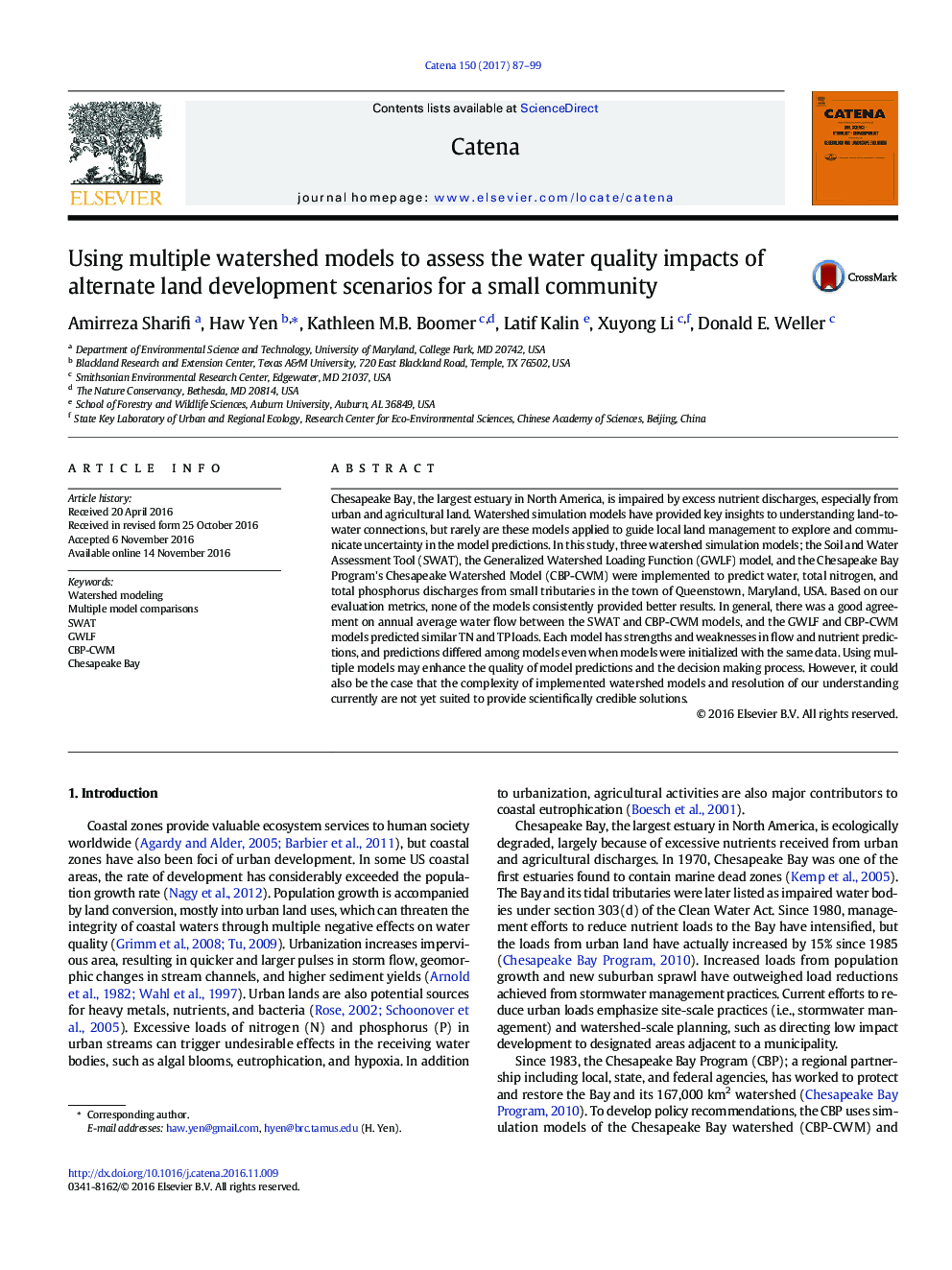| Article ID | Journal | Published Year | Pages | File Type |
|---|---|---|---|---|
| 6407638 | CATENA | 2017 | 13 Pages |
â¢CBP-CWM, GWLF, and SWAT models were applied at the Chesapeake Bay Region.â¢A coastal small community was studied at Maryland's Eastern Shore.â¢Dominant performance cannot be clearly identified by a single model.â¢Impacts on flow/nutrient processes were validated by changing LULC.â¢Simulations were inconsistently affected even initialized by similar input data.
Chesapeake Bay, the largest estuary in North America, is impaired by excess nutrient discharges, especially from urban and agricultural land. Watershed simulation models have provided key insights to understanding land-to-water connections, but rarely are these models applied to guide local land management to explore and communicate uncertainty in the model predictions. In this study, three watershed simulation models; the Soil and Water Assessment Tool (SWAT), the Generalized Watershed Loading Function (GWLF) model, and the Chesapeake Bay Program's Chesapeake Watershed Model (CBP-CWM) were implemented to predict water, total nitrogen, and total phosphorus discharges from small tributaries in the town of Queenstown, Maryland, USA. Based on our evaluation metrics, none of the models consistently provided better results. In general, there was a good agreement on annual average water flow between the SWAT and CBP-CWM models, and the GWLF and CBP-CWM models predicted similar TN and TP loads. Each model has strengths and weaknesses in flow and nutrient predictions, and predictions differed among models even when models were initialized with the same data. Using multiple models may enhance the quality of model predictions and the decision making process. However, it could also be the case that the complexity of implemented watershed models and resolution of our understanding currently are not yet suited to provide scientifically credible solutions.
